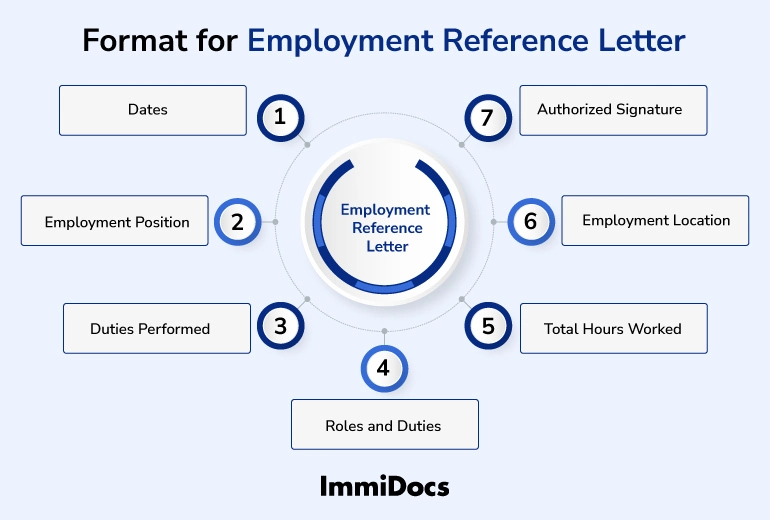Are you trying to submit an RPL report to the Australian Computer Society (ACS) based on your work experience? If so, one crucial document is the Employment Reference Letter for your ACS RPL Report. This letter, written by your employer or manager, confirms your job details, skills, and experience. It serves as an essential part of the ACS RPL assessment.
The ACS, which checks skills for the Department of Home Affairs, examines this Employment Reference Letter for the ACS RPL Report. They aim to ensure that an applicant’s ICT knowledge and skills align with their nominated occupation. For those lacking a strong ICT background, the RPL assessment pathway becomes crucial to showcase their capabilities.
Skilled Employment for the RPL Report
To write a good Employment Reference Letter for your ACS RPL Report, let’s understand what makes employment ‘skilled’ in the ACS RPL report. According to ACS, skilled employment requires individuals to receive payment for at least 20 hours per week.
This section breaks down paid work, highlighting that skill level assessment only considers paid jobs. They don’t consider unpaid or volunteer roles. The timing is crucial to define skilled employment, recognizing only work done after meeting ACS criteria.
ACS reviews concurrent employment scenarios, allowing recognition of only one job episode at a time.
Skilled employment consists of recognized ICT teaching at an ACS-approved institution. They get considered with a qualification of AQF level or higher. Research related to a thesis is only considered if supported by evidence from the employer.
Temporal relevance is vital in defining skilled employment and recognizing work completed after meeting ACS criteria. They acknowledge single employment episodes and check concurrent scenarios.
ACS accepts teaching in ICT at an ACS-approved institution. This teaching accompanies an AQF qualification level of at least AQF or higher to qualify for skilled employment. Research work tied to a thesis is only fitted unreported by evidence from the employer.
👉 Editors Recommendation: Assessing Your Eligibility for a Skilled Visa With VETASSESS.
Format for Employment Reference Letter
The structure and format of the Employment Reference Letter play an essential role in ensuring ACS requirements. This section serves as a guide, outlining the recommended format for an ACS-compliant letter:

- Dates: State the start and finish dates of the employment period in the DD/MM/YYYY format.
- Employment Position: Specify the job title or position held during the employment period.
- Duties Performed: Provide a detailed list of duties that align with the nominated occupation.
- Roles and Duties: If applicable, delineate roles and duties performed for the same employer.
- Total Hours Worked: Detail the total hours worked per week.
- Employment Location: State the country where the employment was undertaken.
- Authorized Signature: Ensure an authorized person signs the letter on organizational letterhead. Digital signatures are acceptable, provided they are verifiable.
Points to Note for Employment Reference Letter for your ACS RPL Report
When creating your Employment Reference Letter for your ACS RPL Report, focus on these vital aspects to meet their rigorous standards:
- Current Employment Note: Include the phrase “To Date” along with the letter’s preparation date for those employed.
- Temporal Precision: Make it clear that only the experience until the application submission date will count.
- Relevance of Duties: Ensure the assigned duties for assessment are related to the nominated occupation.
- Precise Dates and Duties: Avoid confusion by stating dates and duties to ensure your work experience is suitable for assessment.
- Concurrent Employment Clarification: If you qualify, mention it as “Concurrent Employment.”
How to submit your Employment Reference Letter for your ACS RPL Report?
Understanding how to submit your Employment Reference Letter for your ACS RPL Report is crucial to the ACS RPL process. Follow these steps based on whether your employment was within or outside Australia.
For Employment Within Australia:
- Record each period of employment in the online application.
- This situation ensures a clear and precise presentation of your Australian employment experience.
For Employment Outside Australia:
- Record each period of employment in the online application.
- This situation applies if you work for different employers. It also applies if international employment gets interspersed with Australian employment.
Note: If you worked for the same employer in many countries (excluding Australia) and in a related occupation. You can list the experience as a single period of employment outside Australia in the online application.
🔔Recent Blog: Statutory Declarations and Affidavits for VETASSESS Skill Assessment 🌟🌟
When Will Your Work Experience Be Unsuitable?
Knowing when ACS might consider your work experience unsuitable is essential. Here are situations that can lead to this unfavorable classification:
1. Concurrent Employment
If you have multiple jobs simultaneously, ACS only counts one job at a time.
2. Mismatched ANZSCO
If your job duties don’t match the nominated ANZSCO occupation, ACS might see your work experience as unsuitable.
3. Insufficient Documentation
If your documents are insufficient or need to meet ACS standards, your assessment may not pass.
4. Lack of Detail
If you provide more details for a thorough assessment, ACS may deem your experience suitable.
Key Areas to focus on while drafting ACS Employment Reference Letter
Here’s a breakdown of critical areas of the Employment Reference Letter for your ACS RPL Report:
1. Introduction and Organization Details
Start with a brief introduction and include your organization’s details to set the context.
2. Applicant’s Position and Responsibilities
State your position and show your roles, ensuring they relate to your nominated occupation.
3. Detailed Duties and Tasks
Elaborate on the specific duties and tasks you performed, emphasizing the use of relevant ICT skills.
4. Project Contributions
Showcase your significant contributions to projects. You can prove your active participation and influence on organizational results.
5. Innovation and Problem-Solving
Provide details of examples where you demonstrated innovation. You can show problem-solving skills, reinforcing your ICT skills.
6. Team Collaboration
Highlight your teamwork, showcasing essential interpersonal skills vital in a professional environment.
7. Supervisory or Leadership Roles
If relevant, emphasize any supervisory or leadership positions you held. You can showcase your management and organizational skills.
8. Results and Achievements
Quantify your achievements whenever possible, offering tangible evidence of successful outcomes and contributions.
9. Technologies and Tools Utilized
Specify the technologies and tools you used during employment, aligning them with the ICT field.
💡 Don’t Miss: Certifying documents for Migration.💪💪
Proper Details on the Employment Period
Precision in presenting the duration of employment is non-negotiable. This section provides a blueprint for showing the timeframe, aligning with ACS expectations:
1. Clear Start and End Date
Ensure clarity in presenting the duration of employment by stating the start and end dates in the DD/MM/YYYY format.
2. Overlap with Qualification Period
If the employment period overlaps with a qualification, state the concurrent nature. You can label it as “Concurrent Employment.”
3. Current Employment Considerations
For current employment, include the phrase “To Date” and the preparation date in the DD/MM/YYYY format.
4. Online Application Consistency
Maintain consistency in presenting employment periods in the online application to avoid discrepancies.
5. Work Experience Details
Get to the core of the ACS Employment Reference Letter by showing tasks, responsibilities, and achievements. This section helps applicants communicate these details, highlighting ICT skills and relevance.
6. Detailed Description of Duties
Provide a detailed and comprehensive description of the duties performed. You need to ensure a clear connection to the nominated ANZSCO occupation.
7. Skill Application Emphasis
Emphasize the application of relevant skills and knowledge in the execution of duties. They need to align with ACS assessment criteria.
8. Project-Based Contributions
Highlight project contributions, underscoring the applicant’s role in achieving project objectives.
9. Innovations and Problem-Solving
Showcase instances where the applicant demonstrated innovation and problem-solving capabilities. It helps in substantiating their ICT skills inside the Employment Reference Letter for your ACS RPL Report.
10. Professional Growth
Illustrate any professional growth achieved during the employment period. For example, getting new skills or certifications.
11. Technological Skills
Specify the technologies and tools used, showcasing the applicant’s skills in the ICT domain.
12. Team Collaboration and Leadership
Describe collaborative efforts within a team and any leadership or supervisory roles held. It needs to emphasize interpersonal and organizational skills.
Use Valid Signatures
Make sure your ACS RPL documents are authentic by following these simple steps:
1. Authorized Signatory
Get the letter signed by someone important in the organization, a senior or manager.
2. Use Official Letterhead
Submit the letter on official letterhead to make the Employment Reference Letter for your ACS RPL Report credible.
3. Digital Signatures
If using a digital signature, ensure it is valid, verifiable, and accepted. Include any relevant certifications or assurances to support the digital signature’s authenticity.
💡Learn more: Challenges Faced by Small Businesses in Australia.
More Points to Consider for the Employment Reference Letter
Elevating the Employment Reference Letter for your ACS RPL Report requires supplementary insights. This section provides more tips to fortify the letter and enhance its impact on the ACS assessment process:
- Language Proficiency: Make sure your letter is easy to understand, using simple language and professional communication.
- Show Your Impact: Include specific achievements with numbers. Especially whenever you can to prove your contributions.
- Role-Specific Detailing: Provide detailed information on how you apply ICT skills and knowledge in your job.
- Use Feedback: If available, add feedback or performance evaluations from your job to strengthen your Employment Reference Letter for your ACS RPL Report.
- Stick to Your Job: Customize the letter to highlight details related to your nominated ANZSCO occupation.
- Get Expert Advice: Talk to professionals familiar with the ACS RPL process. You need to ensure your letter meets the rigid assessment criteria.
Reasons for Employment Reference Letter Rejection
This section is an important guide outlining common pitfalls and reasons that may lead to rejection.
To increase your chances of a successful ACS RPL assessment, be mindful of these common pitfalls:
- Incomplete Documentation: Ensure all your documents, especially the Employment Reference Letter for your ACS RPL Report, meet the requirements.
- Match ANZSCO Code: Ensure your duties and responsibilities align with the nominated ANZSCO code.
- Include ICT Details: Provide detailed information on how you apply ICT skills and knowledge in your job.
- Check Employment Dates: Confirm that the dates in your Employment Reference Letter for your ACS RPL Report match those in your online application.
- Valid Signatures: Only submit letters with valid and authorized signatures.
- Clear Duties and Responsibilities: Avoid vague descriptions; outline your duties and responsibilities.
- Address Key Areas: Focus on essential aspects in your RPL report, like detailed duties, technology use, and achievements.
What Does Immidocs Provide?
ACS RPL process might seem complex, but Immidocs is here to help. Let’s explore how Immidocs supports ACS RPL applicants in their journey for a successful assessment:
- Expert Guidance: Get professionals who know the ACS RPL process inside out. They provide accurate guidance to ensure your documentation is spot on.
- Document Review Services: Get positive feedback on essential documents like your Reference Letter. Immidocs helps you refine these for the best possible outcome.
- Tailored Help: Your situation is unique, and Immidocs recognizes that. Receive personalized help to your specific circumstances for your ACS RPL application.
- Process Navigation: Immidocs makes the ACS RPL process easier. Approach the application with the assurance that you have reliable support at every step.
💡Learn more: Assessing Your Eligibility For a Skilled Visa With VETASSESS.
Conclusion
In conclusion, crafting a compelling Employment Reference Letter for your ACS RPL report is crucial. Following the correct format and avoiding mistakes will increase your chances of a positive assessment. With clarity on the process and the proper support, you’re well on your way to ACS RPL success.




